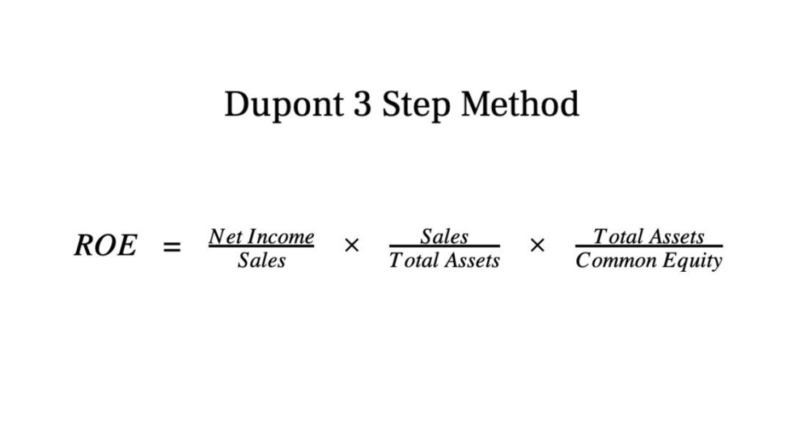Content

While this may seem minor, depreciation can significantly impact a business’s financial statements and tax liability. When using more conservative accounting practices, it is typical to impose a more aggressive depreciation schedule and recognize expenses earlier. Sometimes, a fully depreciated asset can still provide value to a company. In such a case, the operating profits of a company will increase because no depreciation expenses will be recognized. Or extracted from it), land does not depreciate in value over time. In fact, agricultural land is generally viewed as a safe investment with a long track record of modest appreciation in value over time.
- Under this convention, you treat all property placed in service or disposed of during a tax year as placed in service or disposed of at the midpoint of the year.
- You repair a small section on one corner of the roof of a rental house.
- If you trade property, your unadjusted basis in the property received is the cash paid plus the adjusted basis of the property traded minus these adjustments.
- A request to revoke the election is a request for a letter ruling.
- It might seem like an easy choice to use expensing if you qualify.
- Vehicles, fixtures, fittings, and buildings can all depreciate because they undergo wear and tear over time.
That process’ useful life is greater than one year, and despite it being intangible, it would still qualify as a fixed asset. Likewise, a portable piece of equipment used by a construction company would be a fixed asset, even though it is not technically affixed to any structure. Another factor to consider is that large asset purchases are often financed with borrowed capital.
How Do You Calculate Depreciable Assets?
Depreciation for the second year under the 200% DB method is $320. Figuring depreciation under the declining balance method and switching to the straight line method is illustrated in Example 1, later, under Examples. If you dispose of property before the end of its recovery period, see Using the Applicable Convention, later, for information on how to figure depreciation for the year you dispose of it. For property for which you used a half-year convention, https://www.bookstime.com/articles/do-i-need-a-personal-accountant the depreciation deduction for the year of the disposition is half the depreciation determined for the full year. Under this convention, you treat all property placed in service or disposed of during any quarter of the tax year as placed in service or disposed of at the midpoint of that quarter. This means that, for a 12-month tax year, 1½ months of depreciation is allowed for the quarter the property is placed in service or disposed of.
- An addition or improvement you make to depreciable property is treated as separate depreciable property.
- You multiply the adjusted basis of the property ($1,000) by the 40% DB rate.
- Make & Sell did not claim the section 179 deduction on the machines and the machines did not qualify for a special depreciation allowance.
- If you made this election, continue to use the same method and recovery period for that property.
- Maple can depreciate the leased cars because the cars are not held primarily for sale to customers in the ordinary course of business, but are leased.
- Land is not depreciable, so Nia includes only the cost of the house when figuring the basis for depreciation.
The partnership determines its section 179 deduction subject to the limits. Step 6—Using $1,098,000 (from Step 5) as taxable income, XYZ figures the actual section 179 deduction. Because the taxable income is at least $1,080,000, XYZ can take a $1,080,000 section 179 deduction. If the cost of your qualifying section 179 property placed in service in a year is more than $2,700,000, you must generally reduce the dollar limit (but not below zero) by the amount of cost over $2,700,000. If the cost of your section 179 property placed in service during 2022 is $3,780,000 or more, you cannot take a section 179 deduction. May Oak bought and placed in service an item of section 179 property costing $11,000.
Can you Depreciate an Asset to Zero?
Depreciable assets, such as software and hardware, have a service life longer than one year. It means the asset can be used and abused for extended periods before replacing or disposing of it. It helps businesses save money on their overall budget because they do not have to spend as much on new equipment or software. In addition, it allows businesses to use older equipment or software depreciable assets without worrying about it becoming obsolete. It is essential to account for asset depreciation when planning budgets and financial goals because it can significantly impact an individual’s net worth. By understanding how depreciation works and how to calculate it, individuals can make informed decisions about their investments and protect themselves from potential financial losses.

For example, if you stop using a machine because there is a temporary lack of a market for a product made with that machine, continue to deduct depreciation on the machine. Depreciation is an annual income tax deduction that allows you to recover the cost or other basis of certain property over the time you use the property. It is an allowance for the wear and tear, deterioration, or obsolescence of the property.
Helps businesses manage their assets and expenses more effectively.
Similarly, a business call made on an otherwise personal trip does not change the character of a trip from personal to business. The fact that an automobile is used to display material that advertises the owner’s or user’s trade or business does not convert an otherwise personal use into business use. The business-use requirement generally does not apply to any listed property leased or held for leasing by anyone regularly engaged in the business of leasing listed property. Whether the use of listed property is for your employer’s convenience must be determined from all the facts.
Using straight-line depreciation, an owner can anticipate the total cost of owning and operating an asset over its lifetime by estimating the amount of wear and tear on that asset and then calculating its annual depreciation expense. This method provides predictability for both owners and tax auditors and consistency across different types of assets. Depreciation is important in business cost accounting because it provides a tax deduction. This tax deduction allows businesses to recover the costs of certain business expenses, such as equipment and machinery. The deduction amount depends on the particular expense and the depreciation schedule set by the IRS. The value of an asset on the balance sheet is essential in cost accounting because it determines the amount of depreciation that can be claimed.
A method established under the Modified Accelerated Cost Recovery System (MACRS) to determine the portion of the year to depreciate property both in the year the property is placed in service and in the year of disposition. The total of all money received plus the fair market value of all property or services received from a sale or exchange. The amount realized also includes any liabilities assumed by the buyer and any liabilities to which the property transferred is subject, such as real estate taxes or a mortgage. A ratable deduction for the cost of intangible property over its useful life.
This bonus “expensing” should not be confused with expensing under Code Section 179 which has entirely separate rules, see above. To calculate depreciation on real estate, you first have to know the cost basis. The cost basis is the value of the property minus the value of the land that it is built on plus any allowable closing costs.
How Do You Calculate Depreciable Property?
If the percentages elected by each of you do not total 100%, 50% will be allocated to each of you. Unless there is a big change in adjusted basis or useful life, this amount will stay the same throughout the time you depreciate the property. If, in the first year, you use the property for less than a full year, you must prorate your depreciation deduction for the number of months in use. When an asset is depreciated, the cost of the asset is allocated over its useful life, and a portion of the asset’s value is recognized as an expense each accounting period. This depreciation expense is deducted from the business’s taxable income, reducing the amount of income subject to taxation. The tax savings resulting from this deduction is referred to as the Depreciation Tax Shield.


